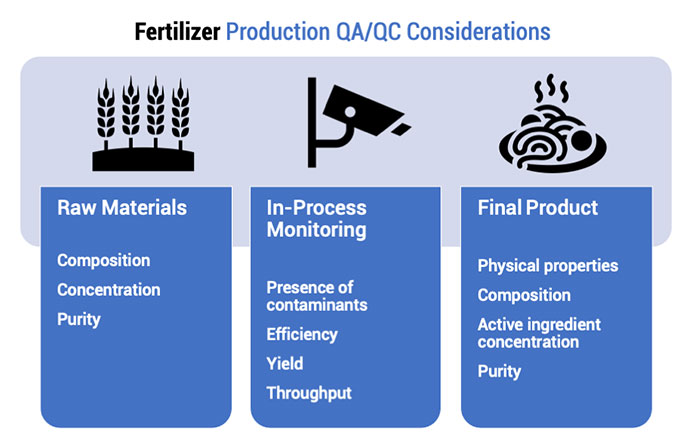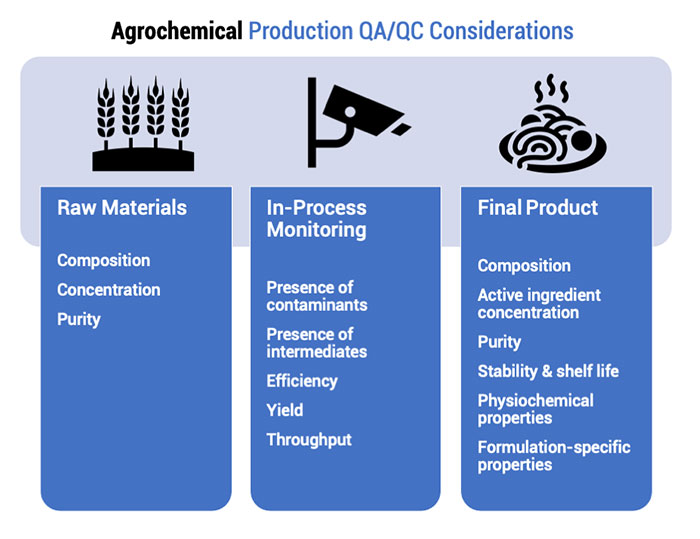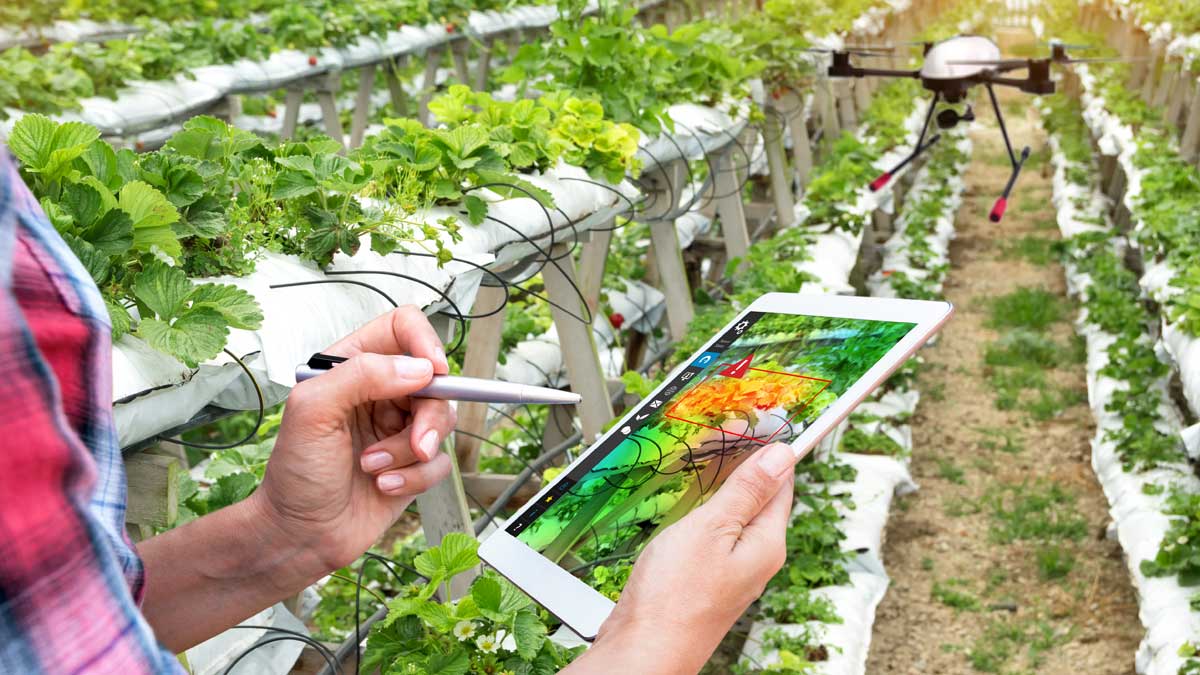Improving Food Yield with Advanced Analytical Testing for Fertilizers and Agrochemicals
Since the earliest known agricultural activity roughly 14,000 years ago, humans have been challenged with producing enough food to survive.
That meant maximizing agricultural yields and preventing losses due to disease, pests, and other adversities. Up until the 20th century, people used naturally occurring substances to fertilize their crops – e.g., manure – and combat pests – e.g., sulfur, ash, lime, mercury, arsenic.
The modern fertilizer and agrochemical industries burst on the scene in the 1940s and have played a significant role in achieving current agricultural production rates. They continue to be called upon today to provide innovative support to the agriculture industry in order to keep up with the increasing food needs of our expanding global population.
The agricultural industry is being challenged to meet the increased food needs and production of our expanding global population.
Challenges such as:
- The loss of arable land due to industrial and community growth
- Climate pressure
- Escalating costs for new product development
- Growing demand for agricultural practices that are both productive and sustainable
Innovation in the Fertilizer and Agrochemical Industries
The fertilizer and agrochemical industries are tackling these and other challenges with vigor and outside-the-box thinking. Consider here a few of their innovative approaches.
New Technologies:
Fertilizer and agrochemical companies have begun looking for ways to integrate new technologies to expand the range of support they provide to customers.
Examples of these advanced technologies include machine learning, information technology, remote sensing, autonomous tools, and others. Use of advanced technologies can also increase the sustainability of product applications, such as in precision agriculture and integrated pest management.
Genetically Modified Seeds:
The development and use of genetically modified (GM) seeds is one means of reducing crop loss and increasing yield by addressing crop stressors. The use of GM seeds has greatly expanded over the past two decades, although not all countries have yet authorized their use. Large agrochemical companies have begun to acquire or partner with GM seed companies as a way to offset losses from reduced pesticide use required for GM crops.
Advanced Plant Nutrition:
Fertilizer companies are developing enhanced efficiency fertilizers (EEF) and improved nutrient delivery methods to improve nutrient use and retention. This allows sustained yields while also reducing impacts on the environment and sustaining soil health. Other innovations are being investigated that will reduce the carbon footprint of fertilizer production.
Advances in nutrient delivery and retention improves crop yields while minimizing environmental impacts.
Bio-based Materials:
The development of bio-based crop protection chemicals is a growing opportunity for agrochemical companies to respond to increasing consumer demand for more sustainable pest management approaches. The development of bio-based agrochemicals is also less cost- and time-intensive, and their registration is more streamlined in many countries.
Fertilizer and Agrochemical Analytical Needs
The fertilizer and agrochemical industries have a broad range of testing needs for research and development (R&D), production, final product testing, and use parameters.
Fertilizer Testing Needs:
The development of new fertilizer formulations requires analytical scrutiny during both the formulation development phase and the field-testing phase. Each proposed formulation is analyzed to confirm its physical and chemical properties, and field studies test the response of crops to the formulation.
Fertilizer production testing begins with checking raw materials for composition and purity before they enter the production process. As the workflow proceeds, monitoring is conducted at strategic checkpoints to ensure the process maintains high purity levels, efficiency, yield, and throughput. Final product testing includes confirming the composition, quality, and safety of the fertilizer before it is shipped to customers.

Agrochemical Testing Needs:
The testing conducted during agrochemical development provides much of the information required for product registration.
Agrochemical R&D testing includes many laboratory and field parameters:
- Active ingredient and product chemistry and equivalency
- Product formulations
- Product performance
- 5-Batch analysis
- Residue chemistry
- Absorption, distribution, metabolism, and excretion
- Toxicity (human, domestic animal, and ecological)
- Environmental fate and transport
- Field dissipation
- Bioaccumulation
- Post-application exposure
Fertilizer production testing begins with checking raw materials for composition and purity before they enter the production process. As the workflow proceeds, monitoring is conducted at strategic checkpoints to ensure the process maintains high purity levels, efficiency, yield, and throughput.
Similar to fertilizer production, agrochemical production requires ongoing QA/QC monitoring to ensure the efficiency and accuracy of the production process. The production testing process begins by checking raw materials for composition and purity, followed by monitoring at strategic checkpoints to ensure the process maintains high purity levels, efficiency, yield, and throughput.
Final products are evaluated for adherence to registration and use specifications such as composition, active ingredient concentration, purity, and stability. Final product testing also evaluates a battery of physiochemical properties.
Highly sensitive methods and instruments are needed to achieve the very low detection limits needed for agrochemical analyses.

Summary
The fertilizer and agrochemicals industries have a long history of innovation that has helped improve food availability and quality for the world. Today, it faces new challenges around the increasing need for food, decreasing agricultural land, climate-related impacts, and agrochemical resistant organisms.
Exciting new discoveries and advanced technologies are poised to usher in the next wave of fertilizer and agrochemical innovation.
Learn more about precision agriculture and integrated pest management in the companion white paper.


